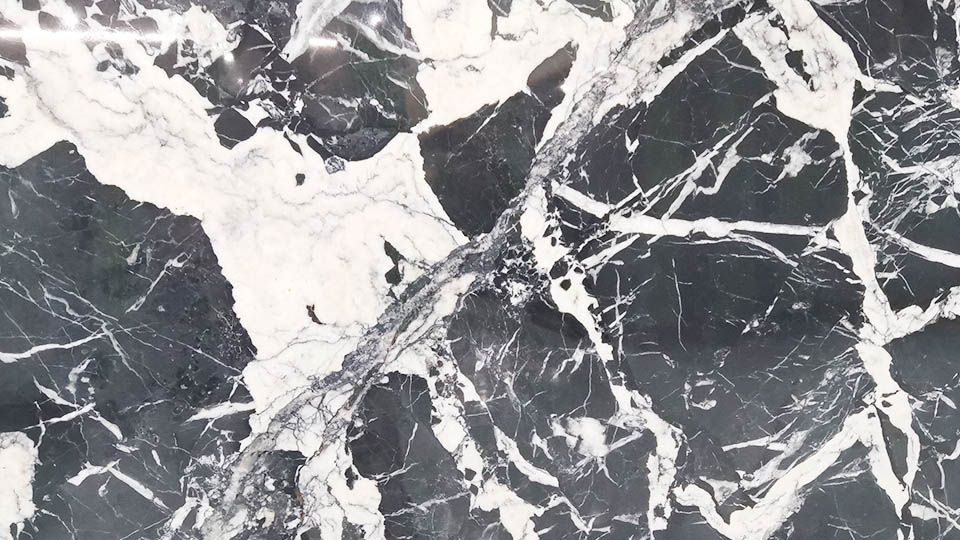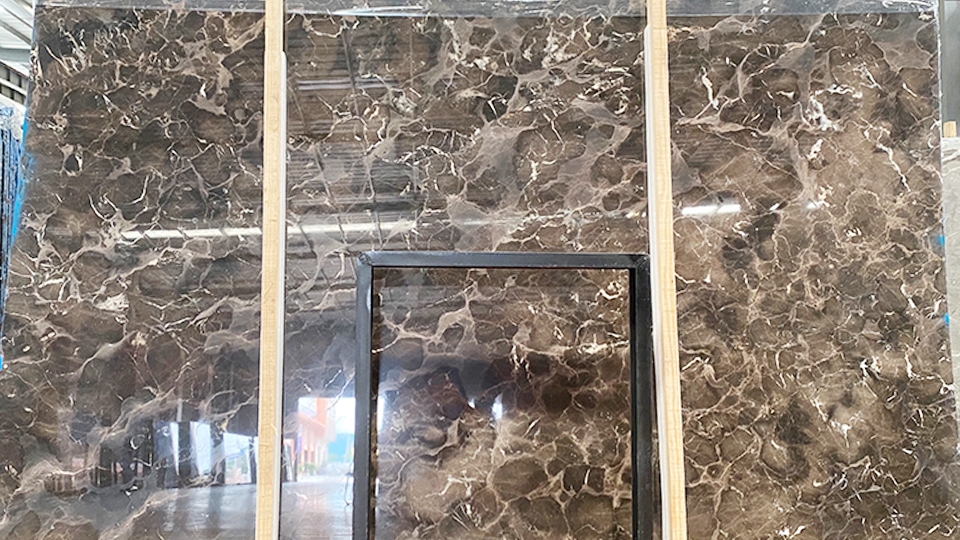

How to Remove Stains from Granite Countertops: A Technical Guide to Restoration and Preservation
Abstract: Granite countertops are a prized feature in many kitchens and bathrooms, celebrated for their natural beauty, durability, and resistance to heat and scratches. However, despite their robustness, granite surfaces are not impervious to staining. Their porous nature, albeit subtle in polished forms, allows for the absorption of various liquids and substances if not properly sealed or if spills are left unattended. This technical article provides a comprehensive guide to identifying, treating, and preventing common stains on granite countertops. It will delve into the chemistry behind different stain types, detail the technical application of poultices and specialized cleaning agents, and emphasize the critical role of proper sealing and routine maintenance in preserving granite's pristine appearance and longevity.
1. Introduction
The enduring popularity and aesthetic appeal of granite countertops.
The common misconception: granite is indestructible and stain-proof.
The reality: granite is a porous natural stone, susceptible to staining if not cared for.
The purpose of this article: provide a technical, step-by-step guide to stain removal and prevention.
Thesis statement: Effective stain removal from granite countertops requires a systematic approach, understanding the stain's chemistry, selecting the appropriate poultice, and adhering to meticulous application and follow-up, all underpinned by consistent sealing and maintenance practices.
2. Understanding Granite: Composition and Porosity
Geological Formation: Explain granite as an igneous rock composed primarily of quartz, feldspar, mica, and other minerals.
Mineral Composition and Color: How different mineral ratios create unique colors and patterns.
Porosity and Permeability:
Explain microscopic capillaries within the stone.
How sealing affects porosity (fills capillaries, creating a barrier).

Distinction between unsealed, poorly sealed, and well-sealed granite and its impact on stain vulnerability.
Importance of proper installation and initial sealing.
3. Categorizing Stains: Identifying the Culprit
Accurate stain identification is crucial for effective treatment. Stains are typically classified by their source:
3.1. Oil-Based Stains (Grease, Cooking Oil, Butter, Cosmetics, Lotion)
Chemistry: Hydrophobic nature, penetrates pores.
Appearance: Darkening of the stone, often translucent.
3.2. Organic Stains (Coffee, Tea, Wine, Fruit Juices, Food, Paper, Urine)
Chemistry: Contain tannins, pigments, or organic compounds that react with stone.
Appearance: Pinkish-brown, dark brown, or reddish discoloration. Can sometimes be superficial.
3.3. Metal Stains (Rust from Cans, Iron Cookware, Nails)
Chemistry: Oxidation of iron/copper within the stone.
Appearance: Rust (orange-brown), copper (green/blue). Can be challenging to remove.
3.4. Biological Stains (Mildew, Algae, Moss)
Chemistry: Living organisms growing on/in the stone, often due to moisture.
Appearance: Greenish-black, greyish, or fuzzy discoloration. Common in damp areas (e.g., sink edges).
3.5. Ink Stains (Markers, Pens)
Chemistry: Pigments/dyes. Can vary in difficulty depending on ink type (water-based vs. permanent).
Appearance: Color of the ink.
3.6. Water Spots/Hard Water Stains (Mineral Deposits)
Chemistry: Calcium, magnesium, and other mineral precipitates left behind after water evaporates.
Appearance: White, chalky residue, sometimes dulling the surface. Not true stains, but surface deposits.
3.7. Etching (Acid Stains - NOT TRUE STAINS)
Chemistry: Acidic substances (lemon juice, vinegar, certain cleaners) react with calcium carbonate (present in varying degrees in granite, more so in marble), dissolving the surface.
Appearance: Dull, lighter, or rough patches. Cannot be removed by poultice; requires professional re-polishing/honing. (Crucial distinction).
4. The Science of Poultices: Drawing Stains Out
What is a Poultice? A paste-like material composed of an absorbent medium and a chemical agent designed to draw a stain out of porous material.
Principle of Action: Reverse capillarity. As the liquid in the poultice evaporates, it draws the staining liquid and its contaminants from the stone's pores into the absorbent material.
Components of a Poultice:

Absorbent Medium:
Diatomaceous Earth: Highly porous, good for various stains.
Fuller's Earth (Attapulgite clay): Excellent for oil-based stains due to its molecular structure.
Baking Soda: Mildly abrasive, absorbent.
Paper Towels/Cotton Balls: For smaller, localized applications.
Chemical Agent (Reactant/Solvent): Chosen based on the stain type.
5. Step-by-Step Stain Removal Guide: Poultice Application
5.1. Preparation and Safety Precautions
Clean Surface: Thoroughly clean the area around the stain.
Personal Protective Equipment (PPE): Gloves, eye protection, masks (especially for strong chemicals).
Ventilation: Ensure good airflow.
Test Area: Always test the poultice on an inconspicuous area first to ensure no adverse reaction with the granite.
5.2. General Poultice Application Method
Mix the Poultice: Create a paste consistency (like peanut butter) – not too runny, not too dry.
Apply to Stain: Apply a 1/4 to 1/2 inch thick layer, extending beyond the stain by about 1/2 to 1 inch.
Cover: Cover with plastic wrap (e.g., cling film) and tape down the edges. This slows evaporation, maximizing drawing power.
Poke Holes (Optional): A few small holes in the plastic can aid evaporation, but sometimes a completely sealed environment for a longer period is better.
Dwell Time: Allow to dry completely (12-48 hours, sometimes longer). Drying is crucial for the drawing action.
Remove: Once dry, carefully scrape off the hardened poultice using a non-abrasive scraper (e.g., plastic putty knife).
Rinse: Rinse the area thoroughly with distilled water and dry with a clean cloth.
Repeat: Multiple applications may be necessary for stubborn stains.
5.3. Specific Poultice Formulations for Different Stain Types
Oil-Based Stains:
Chemical Agent: Acetone (nail polish remover), Mineral Spirits, Amyl Acetate.
Absorbent: Fuller's Earth or Diatomaceous Earth.
Method: Mix chosen solvent with absorbent to form paste. Apply.
Organic Stains:
Chemical Agent: 12% Hydrogen Peroxide (for light granite), Ammonia (for dark granite - never mix with bleach!), or a dilute solution of household bleach.
Absorbent: Diatomaceous Earth or baking soda.
Method: Mix chosen agent with absorbent. Apply.
Metal (Rust) Stains:
Chemical Agent: Rust remover designed for stone (contains hydrofluoric acid or oxalic acid derivatives). Caution: Hydrofluoric acid is extremely dangerous; use professional products and extreme PPE.
Absorbent: Diatomaceous Earth.
Method: Mix chemical agent with absorbent. Apply as per general method. Professional intervention often recommended for severe rust.
Biological Stains:
Chemical Agent: Dilute bleach solution (household bleach to water 1:1), or 12% Hydrogen Peroxide.
Absorbent: Diatomaceous Earth or baking soda.
Method: Mix chosen agent with absorbent. Apply.
Ink Stains:
Chemical Agent: Rubbing alcohol (for permanent marker), Acetone (for ballpoint ink).
Absorbent: Cotton balls or paper towels (for initial blotting), then a small poultice if needed.
Method: Blot carefully first. If stain persists, apply a small poultice.
Hard Water Spots/Mineral Deposits (NOT Poultice):
Treatment: Use a specialized granite-safe cleaner for hard water, or gently buff with very fine steel wool (#0000) and a small amount of water. Avoid acidic cleaners.
6. Post-Stain Removal: Sealing and Maintenance
6.1. Re-Sealing the Granite:
Importance: Poultice action can draw out existing sealant.
Process: After successful stain removal and drying, thoroughly clean the area. Apply a high-quality impregnating granite sealer according to manufacturer instructions.
Testing the Seal: Water bead test (water should bead up, not soak in).
6.2. Preventative Maintenance:
Immediate Spill Cleanup: Wipe spills immediately, especially acidic or oily liquids.
Use Coasters and Trivets: Protect from rings, heat, and potential etching.
Avoid Harsh Cleaners: Do not use abrasive cleaners, acidic cleaners (vinegar, lemon juice), ammonia, or general-purpose cleaners not designed for stone.
Use pH-Neutral Cleaners: Daily cleaning with cleaners specifically formulated for natural stone.
Regular Sealing: Re-seal granite every 1-3 years, depending on usage and porosity. Test annually.
Proper Cutting Boards: Always use a cutting board; avoid cutting directly on granite.
7. When to Call a Professional
Stubborn Stains: If multiple poultice applications fail.
Deeply Ingrained Stains: Stains that have penetrated very deeply.
Etching: Professional re-honing and re-polishing is required for etched surfaces.
Large or Complex Stains: Where expertise and specialized equipment are needed.
Uncertainty: When unsure about the stain type or appropriate chemical.
Damage Prevention: Professionals have the knowledge and tools to prevent further damage to the stone.
8. Conclusion
Reiterate that while granite is durable, it requires diligent care.
Emphasize the systematic approach to stain removal: identification, correct poultice formulation, and meticulous application.
Highlight the critical role of sealing and proactive maintenance in preventing future stains and preserving the granite's beauty.
Final thought: With the right knowledge and tools, homeowners can effectively address most granite stains, ensuring their countertops remain a stunning and functional centerpiece for years to come.
References (Optional but Recommended):
Stone care product manufacturers' technical data sheets (e.g., Tenax, Akemi, Fila, StoneTech).
Industry associations for natural stone (e.g., Marble Institute of America - now Natural Stone Institute).
Chemistry textbooks explaining stain reactions and solvents.
Professional stone restoration guides.
Name: selena
Mobile:8613176910558
Tel:86-13176910558
Whatsapp:8619323167067
Email:409284553@qq.com
Add:Laizhou ,Shandong , Shandong Province, China